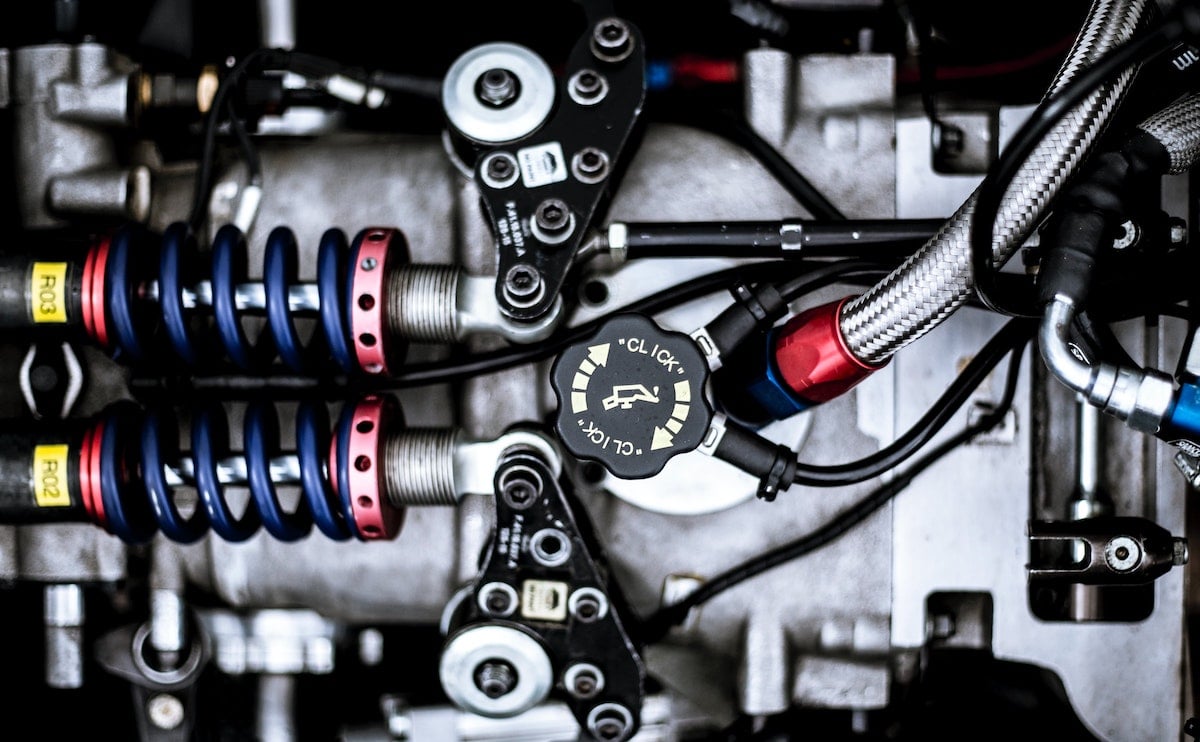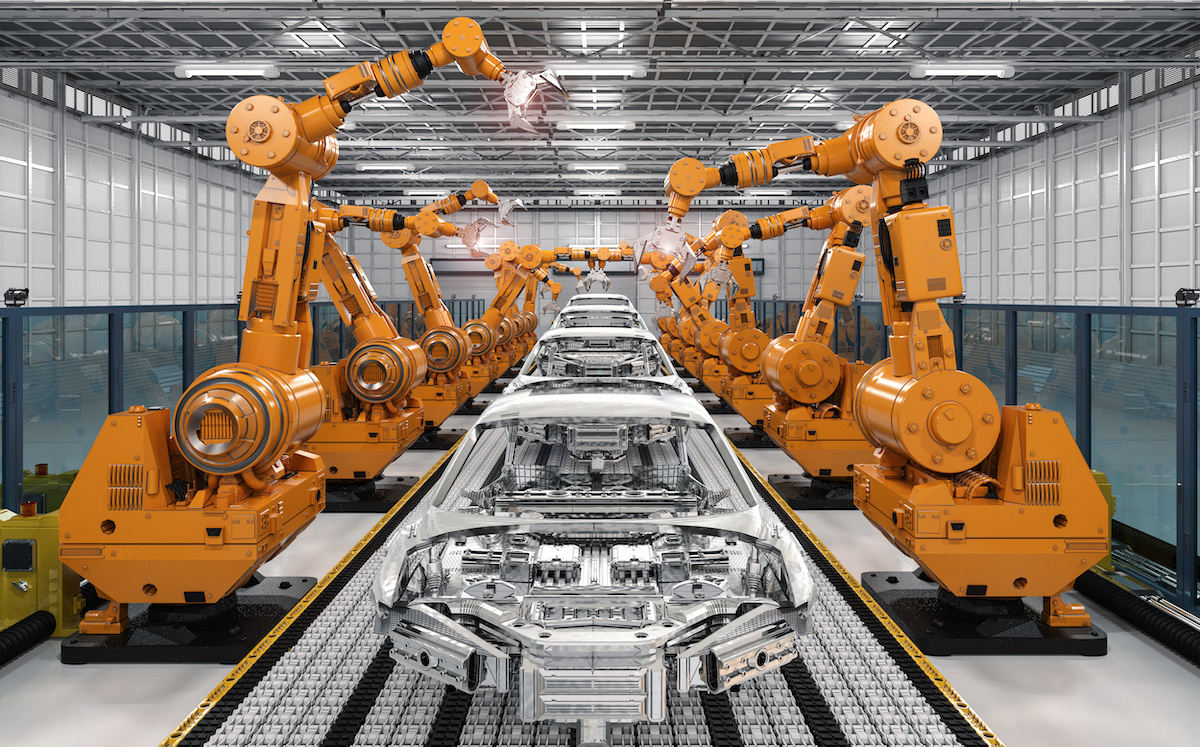In order to answer your request, we are obligated to process the data given above. Sometimes, however, we would like to use them for slightly different purposes, such as statistical data or informing you about our new products and services.We promise that we will use the given information for communication purposes only. We also remind you that you can unsubscribe from our mailing at any time (see Privacy Policy).
Are you looking for fulfilment solutions in the automotive industry? Wondering how to prepare your ecommerce store for this process? In our article, you will find useful tips and information about the most important stages of the car part fulfilment process.
Automotive parts fulfilment can cause many challenges, as both demand and competition are rapidly growing in the market. What's more, the order fulfilment process in this industry is significantly different from others - there are very strict and specialised requirements for the service, transport, storage, and inventory levels of individual vehicle components.

The automotive industry: an overview
You might perceive the automotive industry to be mainly about nice, fast, and luxurious cars, but they are only the tip of the iceberg.
The automotive industry is one of the biggest and most important industries in the EU and, crucially, a key employer having a multiplier effect on the economy. 23% of vehicles in this region are made in Europe and about 32% in China.
In 2020 due to the Covid-19 pandemic world vehicle manufacturing dropped by 16% to around 78 million cars produced from 92.5 million in 2019.
When we talk about vehicle manufacturers it is worth pointing out that all brands focus on the invention and production of all-electric vehicles (or plug-in hybrids). Some of the many aims of automotive manufacturers are the automation of all production processes, reduction of carbon footprint, improving autonomous vehicles, and trying to invent more light-weight automotive parts and technologies. Also, the aftermarket automotive parts supply chain has evolved thanks to ecommerce, with parts-only retailers offering tens of thousands of spares.
Trends and opportunities
Let's focus for a moment on automotive parts. Vehicle parts fulfilment is vastly different from to that of other industries because there are special requirements regarding the handling, storing, inventory management, and transporting of these items.
First of all, the amount of available spare parts is enormous. There are a large number of SKUs (Stock Keeping Unit) to deal with, all cars vary, and they have different VINs (Vehicle Identification Number). This means that every part of a specific vehicle has to be searched for by its brand, model, year of production, version, engine, and gearbox, etc. Each of those listed factors may demand different parts. If a consumer has no idea what part they need, they always have the option to ask a dealership parts department.
Talking about the quantities, some parts like brakes, oils, and filters are incredibly popular. Companies sell them every day because they are the most commonly used parts for servicing. However, customer still look for other items that are not so typical (e.g. cylinder head cover sealing or side window), so they also have to be available in the warehouse. You just have to imagine the amount of stocks and frozen money in this particular industry as a result.
Secondly, there is a variety of parts with different shapes, weights, heights, and flammability levels. This causes another logistics challenge to flare up - how to prepare a logistics division for such diversity in inventory management and maintain a warehouse to deal with picking, packing, and stocking those complex parts?
Thirdly, as mentioned earlier, it is hard for consumers to choose the right automotive parts by themselves. Information about the required parts can be found online by their VINs, but sometimes this alone is not adequate. Product Information Management (PIM) - which is application that provides a place to collect and manage all product information, create a product catalog, and distribute it to sales and ecommerce channels - may be helpful here, but this system cost a lot.
As you can see, it is clear that auto parts fulfilment services are not a piece of cake.
Customer satisfaction (and expectations)
The automotive industry is one of the most quickly developing industries - customers expect that next generations of cars will be much more innovative, safe, and eco-friendly, among others. For workshops customers it's crucial to have access to shipped parts on time, so their distribution has to be efficient. It's necessary to meet customer expectations and commit to delivery times.
Also, there's a new business-to-consumer-to-business (B2C2B) model that companies want to use. For example, if a customer wants to buy tires from a manufacturer, sells them to the client but ships them to a service/workshop to be installed on the vehicle in question. In this way, manufacturers can form a new, essential relationship.
Packaging and storage methods
In this industry, packaging can be challenging. There is a lot of small auto parts like filters, spark plugs, and light bulbs. Also, there are many big items in unusual sizes like bumper parts, engines, mufflers, and heavy goods such as whole wheels, etc. When customer orders a few products from a different category, it's important not to pack them in one box. The combination of a brake disc and a lightbulb in one package would not be so sensible.
Size of box and filling
In most cases, there will be a need for a box in a similar size to the part, and it can be filled with a filler - for environmental reasons, biodegradable or recyclable materials are worth considering here. With delicate parts it's crucial to fill the box properly and not to squash them, since they will be no longer usable if damaged during shipping.
If parts are not so fragile, the boxes they are packed in can be of the same size, and nothing will happen during delivery. Some items can be squashed, for example, a car mat - it's better to deliver them flat, but they will not break or get damaged by sending them with just some wrapping around.
When it comes to abnormal sizes like bumper cover, some dealers ship them in enormous boxes. The same goes for windscreens, which are wrapped in foil and require the courier to have a special holder for delivering the part safe and sound to the consumer's doorstep.
Storage methods
Auto parts can have specific storage method models. You have to remember that in this industry there is a lot of oils, different fluids, and filters, etc being used that must be kept at specific temperatures. This includes tires, for instance, which are best stored in a cool, dry environment and if possible vertically in order to reduce distortion.
Also, oils and other liquids are flammable products, so the warehouse should be equipped with safety devices such as fire alarms. The storage facility should provide a dry place with controlled temperature for those products.
Shipping
As mentioned before, shipping and distribution operations can be tricky here. Delivering fragile parts have to be done carefully, with extra holders. Long, big packages require more space in delivery truck. Some of the shipped items are dangerous, flammable products that have to be treated with special precaution. What's more, external factors like weather, temperature, and humidity are important too. Everything has to be taken into consideration.
In this industry, keeping to lead times, such as next-day delivery is really meaningful. Workshops cannot wait days for parts to arrive, as doing so would stop their workflow and preclude them from providing services to more customers. The best solution for that setback is to find the best fulfilment center with local stocks and reliable, verified couriers.
Return policy
When it comes to returns and reverse logistics, a lot depends on your business and what kind of return policy you establish. Many brands have return policies published on their website. In the automotive industry, most parts can be returned within 14 days of purchasing. There might also be a list of non-returnable parts, depending on the suppliers.

How to manage automotive industry fulfillment?
To sum up, this industry faces a lot of challenges when it comes to fulfillment processes, but you have to think outside the box and break the stereotype. You don't have to scale your store abroad with a whole portfolio - research new markets and see which have the most potential. Perhaps start with only your bestsellers and small numbers of your other stock. The most important thing is to grow on a new market, becoming recognizable and trustworthy.
Besides, you can think of creating a new line of products, for example, a motorcycle line (lifestyle, accessories, spare parts) in countries where the bike season last almost the whole year.
Do you feel that some of the recommendations we have outlined would be a problem for you? Need help planning the fulfilment strategy for your business? We are here to help.
We aim to provide the best possible experience for your customers throughout the entire order fulfilment process. We will not only help you to find the best solutions, but also to optimise specific phases and choose the right partners.
With us you will release your potential:
- a single contract gives you a professional service for the entire logistics process
- if you want to start selling internationally, you will get access to the intelligent Fulfilment Network
- we provide support and expert advice from the beginning of our cooperation
- technical assistance for the implementation and integration of our solutions
How does this benefit your business?
- save time and creativity for what you specialise in
- opens a new path of expansion for your ecommerce business
- achieve a competitive advantage and grow
What problems can we eliminate? No more:
- issues with poor order processing
- negotiations
- unclear offers
- searching for the right logistics operator
- reliance on big, corporate players only
Don’t wait, let us do the ecommerce fulfilment for you.

.png)



